Figures & data
Table 1. ACE inhibitory assay procedures.
Figure 1. Absorption spectra of solutions were prepared according to the procedure described in “Materials and methods”. Line A represents the absorption spectra of the reagent blank. Line B represents the absorption spectra of the mixture of amino acids reacted with DAB-QL solution and acetic anhydride. Line C represents the absorption spectra of the mixture of HA reacted with DAB-QL solution and acetic anhydride.
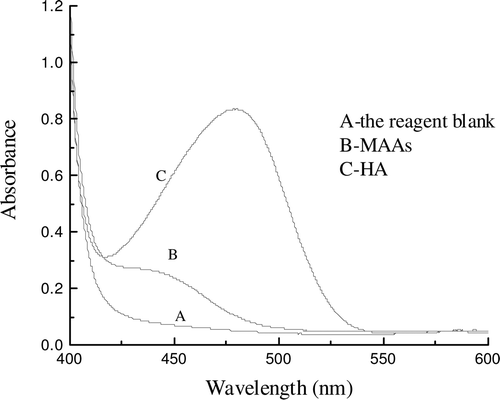
Figure 2. Effect of incubation time of DAB-QL solution on color development. 100 μL of HA standard solution was allowed to react with 2.0 mL of 2.5% DAB-QL and 0.2 mL of acetic anhydride and at room temperature for 30 min.
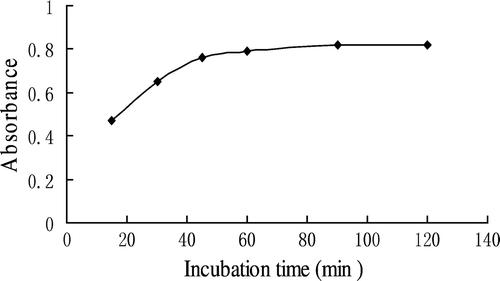
Figure 3. Effect of TEAA amount on color development. HA standard solution (100 µL) was allowed to react with 2.0 mL of 2.5% DAB-QL and 0.2 mL of acetic anhydride at room temperature for 30 min, in the presence of different amounts of TEAA.
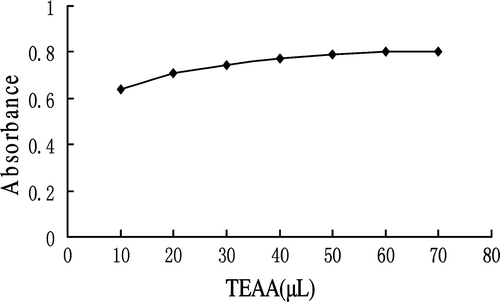
Figure 4. Effect of ratio of DAB-QL solution to acetic anhydride. Each ratio of DAB-QL solution to acetic anhydride was added to the incubation mixture containing 100 µL of HA per cuvette.
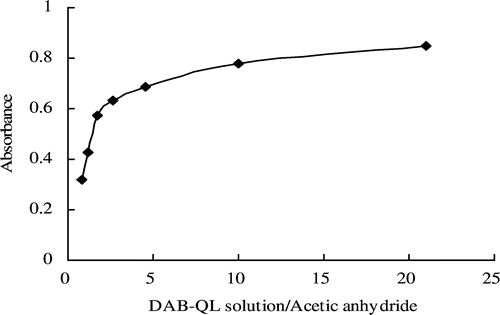
Figure 5. Effect of the concentration of DAB on color development. HA standard solution (100 µL) was allowed to react with different concentrations of 2.0 mL of DAB-QL solution and 0.2 mL of acetic anhydride at room temperature for 30 min.
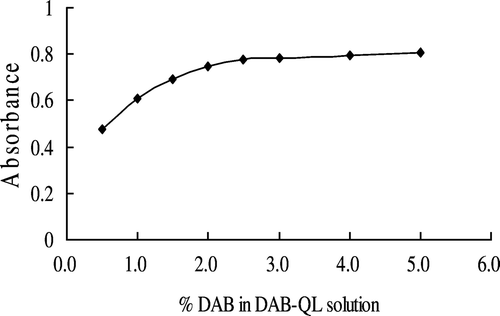
Figure 6. Effect of incubation time on color development at room temperature. HA standard solution (100 µL) was allowed to react with 2.0 mL of 2.5% DAB-QL and 0.2 mL of acetic anhydride for different time periods at room temperature.

Figure 7. Effect of water on color development. HA (25 µg) was allowed to react with 2.0 mL of 2.5% DAB-QL solution and 0.2 mL of acetic anhydride at room temperature, in the presence of different amounts of water.
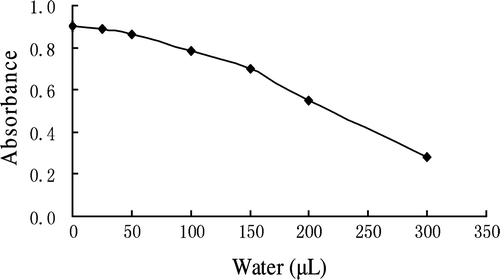
Figure 8. Absorption spectra of chromogenic reaction solutions in ACE inhibitory activity assay. A control solution and a blank solution in ACE inhibitory activity assay were allowed to react with 2.0 mL of 2.5% DAB-QL solution and 0.2 mL of acetic anhydride at room temperature.
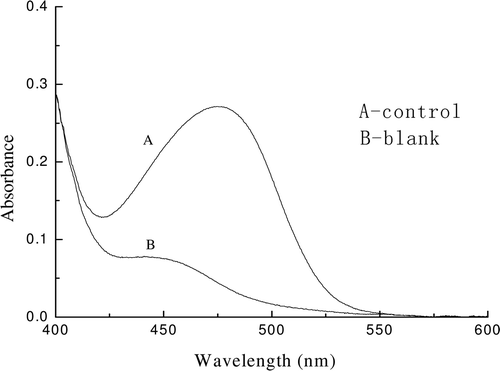
Table 2. Comparison of the results obtained by the current and HPLC methods.